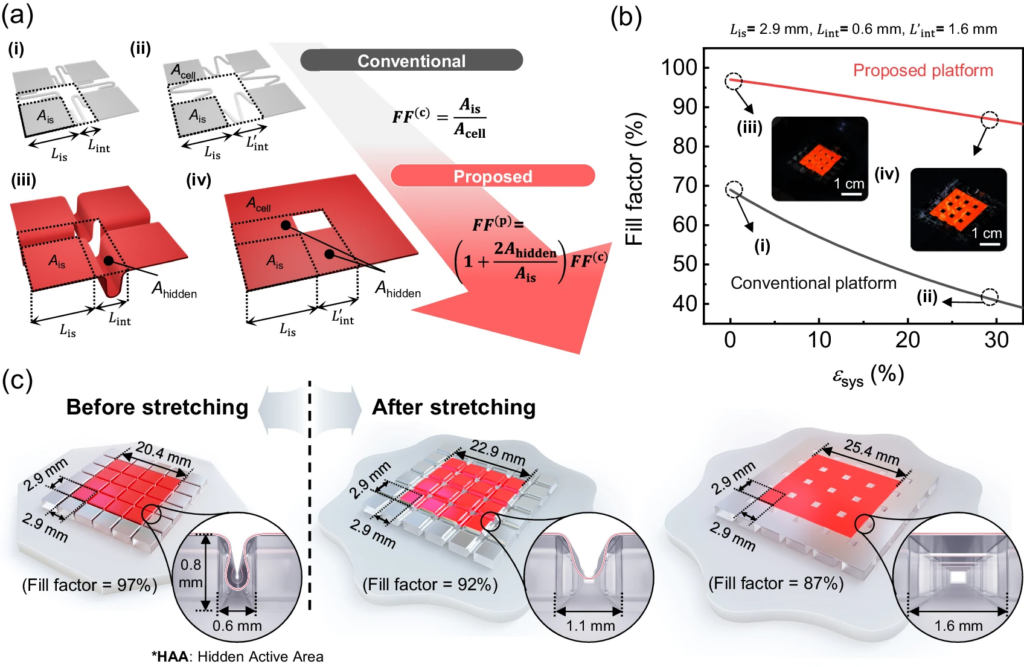In the dynamic realm of display technology, innovation continues to push boundaries, particularly with the advent of stretchable OLED displays. These displays promise to revolutionize wearable technology and health-monitoring devices by enabling more flexible and conformable surfaces. Traditional stretchable OLEDs, however, have grappled with resolution issues when stretched, as the gaps between the pixel “islands” become prominent. A new solution from a research team at the Korea Advanced Institute of Science and Technology (KAIST), led by Seunghyup Yoo, offers a promising new approach to this challenge.

The team’s innovation revolves around embedding ultrathin OLEDs within the folds of the display. This design strategy significantly mitigates the resolution loss typically experienced when these displays are stretched. When stretched to a strain of 30 percent along two axes, an impressive 87 percent of the device continues to emit light, preserving most of its resolution.
The KAIST team’s approach combines traditional materials with cutting-edge design. The stretchable substrate, made from an elastomer, is patterned with a series of square islands. These islands are interspersed with ultrathin OLEDs that fold into the spaces between the islands in their relaxed state. When stretched, these hidden OLEDs emerge, filling the gaps and maintaining the display’s integrity. This method is distinct from other techniques, such as creating inherently stretchy materials or connecting rigid islands with serpentine wires, as it leverages the flexibility and robustness of ultrathin OLEDs.

The fabrication process begins with molding the elastomer substrate and creating the OLED array on a separate glass sheet. The OLEDs, made from conventional materials but engineered for mechanical robustness, are then transferred to the prestretched elastomer. As the elastomer is relaxed, the OLEDs fold into the spaces between the islands, hidden until the display is stretched.
The innovative design results in a high fill factor both before and after stretching. Conventional rigid-island designs lose about 60 percent of their active area when stretched, while the KAIST team’s display only loses about 10 percent. This leap in performance means that the display maintains 87 percent of its pixel density even when subjected to substantial deformation.
While the first applications of flexible OLEDs were in curved screens, Yoo believes that stretchy screens will initially be used on rigid objects. The ultimate goal, however, is to enable truly three-dimensional form factors like spheres. The team is also exploring the integration of these displays into health-monitoring devices and biometric sensors, capitalizing on the flexibility and conformability of the technology.
This research not only opens the door to new wearable tech and health-monitoring devices but also offers a pathway to more complex and diverse applications. As technology advances, the ability to create high-resolution, stretchable displays will likely become a cornerstone of next-generation electronic devices, providing unprecedented versatility and functionality.
Reference
Lee, D., Kim, S., Kim, T., Choi, D., Sim, J. H., Lee, W., Cho, H., Yang, J. H., Kim, J., Hahn, S., Moon, H., & Yoo, S. (2024). Stretchable OLEDs based on a hidden active area for high fill factor and resolution compensation. Nature Communications. https://doi.org/10.1038/s41467-024-48396-w

